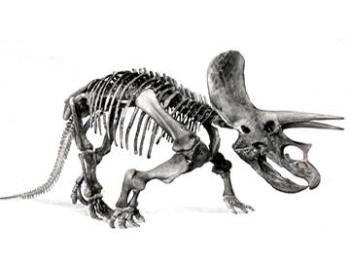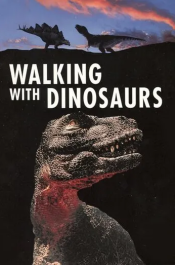
October is International Dinosaur Month. Take this opportunity to checkout some fun, educational books and movies about dinosaurs and learn more about them.
- Dinosaur Books for Kids
- Image

Dinosaur World: Over 1,200 Amazing Dinosaurs, Famous Fossils, and the Latest Discoveries From the Prehistoric Era by Evan Johnson-Ransom
Did you know some dinosaurs had feathers? Or that others had full body armor? From humongous herbivores to fearsome carnivores, this book covers everything you’ll ever need to know about dinosaurs. Examine surprising fossil evidence found around the world and discover each species’ adaptations and specializations. You’ll learn all about their attack and defense tools, including retractable claws, serrated teeth, clubbed tails, large horns, sharp spines, and more. Go beyond fan-favorites like the T-rex and the Triceratops and venture into the latest discoveries from the Triassic, Jurassic, and Cretaceous periods.
Dinosaur Atlas: When They Roamed, How They Lived, and Where We Find Their Fossils
Dinosaur Feathers by Dennis Nolan
Dinosaur & Other Prehistoric Creatures Atlas by Chris Barker
1,000 Amazing Dinosaur Facts by Stevie Derrick

Triceratops horridus (Pictured)
With its stocky and husky 25-foot-long skeleton, Triceratops would have been a formidable adversary even without its massive and bizarre skull, armed with three intimidating horns and a sturdy shield of bone at the back.
Dino Fact: In 1842, the English naturalist Sir Richard Owen coined the term Dinosauria, derived from the Greek deinos, meaning “fearfully great,” and sauros, meaning “lizard.”
Dino Fact: Dinosaur names are often made up of combinations of Greek and Latin root words that describe anatomical characteristics or how the animal might have behaved. Other dinosaur names might honor a person or denote where the fossil remains were discovered.
- Dinosaur Books for Adults
- Image

The Rise and Fall of the Dinosaurs: A New History of a Lost World by Steve Brusatte
A nimble introduction to the world of dinosaurs, this captivating book explores the excitement associated with searching for and discovering new dinosaur species, provides clues to many long-standing questions associated with dinosaurs, and furthers the understanding of ecological and evolutionary development of these fascinating creatures. A mix of memoir, chronicling Steve Brusatte’s odyssey from a child smitten by dinosaurs to a member of a vibrant scholarly community, and first-rate science writing for laypeople. Superbly illustrated with photos and art, this is stellar popular-science writing not to be missed.
How Fast Did T. Rex Run? Unsolved Questions from the Frontiers of Dinosaur Science by David Hone
Dinosaurs - The Grand Tour: Everything Worth Knowing About Dinosaurs from Aardonyx to Zuniceratops by Keiron Pim
The Last Days of the Dinosaurs: An Asteroid, Extinction, and the Beginning of Our World by Riley Black
Dino Fact: Contrary to what many people think, not all dinosaurs lived during the same geological period. Stegosaurus, for example, lived during the Late Jurassic Period, about 150 million years ago. Tyrannosaurus rex lived during the Late Cretaceous Period, about 72 million years ago. Stegosaurus was extinct for 66 million years before Tyrannosaurus walked on Earth.
Dino Fact: There are roughly 700 known species of extinct dinosaurs.
- Dinosaur Documentaries
- Image

Although the six-part TV docuseries Walking with Dinosaurs dates back to 1999, it is one of the most highly regarded dinosaur documentaries ever made. Produced by the BBC Science Unit, the Discovery Channel, and BBC Worldwide, the show is reminiscent of the feel and style of a traditional nature documentary, closing in on dinosaurs as if they were, say, lions in the wild.

Dino Fact: From an individual footprint, scientists can estimate the height of the dinosaur that made it. A rough estimate of leg length is obtained by multiplying the print length by four.
Dino Fact: Plant-eating dinosaurs had teeth of various shapes designed for their particular diets. Triceratops, for example, had hundreds of teeth that formed a solid “wall” with sharp ridges. The teeth were used to chop off vegetation. Other plant eaters, such as Anatotitan, had wide flat teeth that they used to grind up tough vegetation. The long-necked dinosaurs, such as Diplodocus, had long pencil-like teeth that they used to rake the leaves off branches. These dinosaurs swallowed the leaves whole.
Dino Facts and pictures from the American Museum of Natural History.